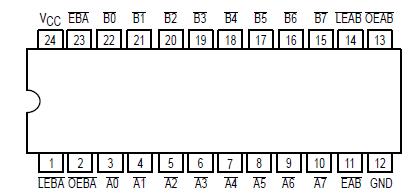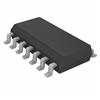MC74F544: PinoutDescriptionThe MC74F544 contains two sets of eight D-type latches, with separate input and controls for each set. For data of MC74F544flow from A to B, for example, the A-to-B Enable (EAB) inp...
floor Price/Ceiling Price
- Part Number:
- MC74F544
- Supply Ability:
- 5000
Price Break
- Qty
- 1~5000
- Unit Price
- Negotiable
- Processing time
- 15 Days
SeekIC Buyer Protection PLUS - newly updated for 2013!
- Escrow Protection.
- Guaranteed refunds.
- Secure payments.
- Learn more >>
Month Sales
268 Transactions
Payment Methods
All payment methods are secure and covered by SeekIC Buyer Protection PLUS.

 MC74F544 Data Sheet
MC74F544 Data Sheet







